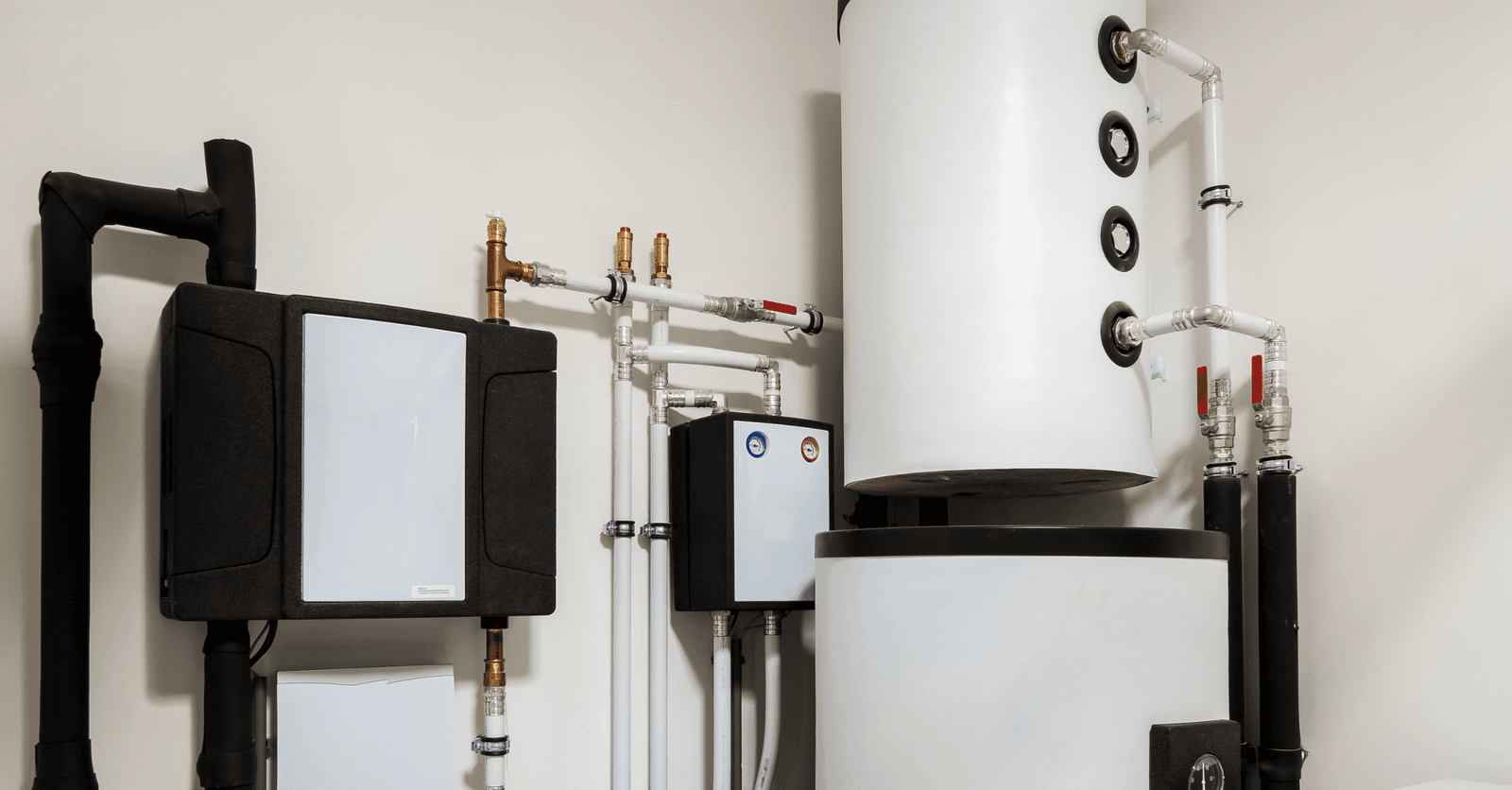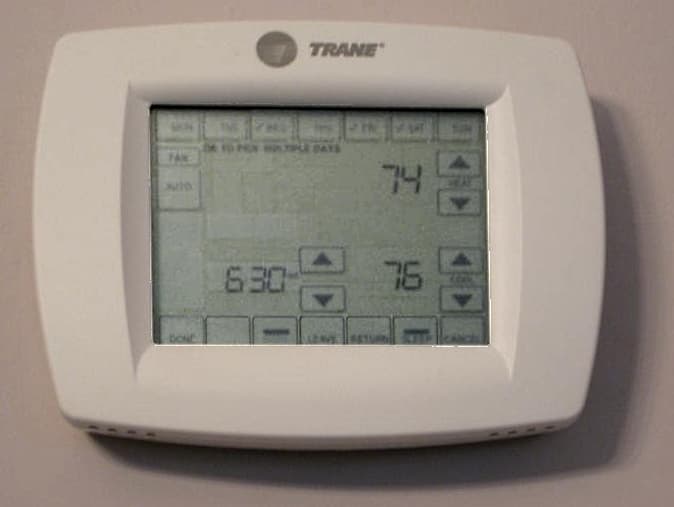Forced-Air Heating System: Characteristics and Advantages
By Editorial Team
Updated on December 6, 2023

Are you looking for a heating system that better suits your household and want to know more about forced-air heating system characteristics?
Here’s a brief guide to gain further insight.
Forced-Air Heating System Characteristics

Source : Canva
A fan-forced or forced-air heating system uses air to distribute heat (or cold air) into your home. A forced-air heating system is always designed with these features and components:
Fan
Filter
Ductwork
Multiple hot air vents
Multiple air return registers
Multiple radiator bleed keys
Humidifier/dehumidifier (the latter is optional)
The fan’s purpose is to ensure air is properly distributed through the ductwork and prevent pressure drops. As for the filter, its purpose is to prevent the distribution of potentially harmful airborne substances by eliminating them. Therefore, the fan draws in the ambient air in your home, filters it, and then warms it courtesy of a heat source, prior to being dispersed through strategically placed floor resisters.
Should you need to maintain a specific humidity level inside your home, you can then use humidifiers or dehumidifiers. By using such appliances, you’ll increase your comfort level. It’s a known fact nowadays that the humidity level in the air can lead to health issues.
A forced-air heating system is retailed as several different types of appliances. Of these, two are most commonly used in Canadian households: forced-air furnaces and air-source heat pumps.
Furnaces run according to forced-air systems, no matter how they’re powered (gas, oil, or electricity). As for heat pumps, they let you experience both cold and warm air, depending on your needs. An air-source heat pump is a really great choice, environmentally speaking, since it’s significantly energy efficient and allows you to save financially over time.
The Benefits of a Forced-Air Heating System
A forced-air heating system offers diverse advantages, including the ability to channel air through a duct system that runs throughout a building for better distribution:
Air-forced heat distribution doesn’t require lengthy delays. The system is very reactive and allows you to efficiently warm your home. Decide on a temperature, and it’ll be reached in no time.
Since hot air vents and air return registers are built into walls, there’s no loss of living space.
Not only is it quick and discreet, but a forced-air heating system is cheaper than, for example, an electric heating system.
This system can very easily be used to cool down your home. In fact, its whole concept is based on channelling air, so it can very well be chilled and serve as an AC.
This system allows you to manage the temperature in your dwelling as a whole; if you wish to control each room individually, you’ll need hot air vents with shutters.
Furthermore, a forced-air heating system must have a filter as well as an outdoor receptacle. Fresh air can breeze through your home. In a similar fashion, the filter prevents harmful allergen or particle distribution.
Not unlike most things in life, there’s a flip side. This type of system is rather voluminous, therefore you have to ensure there’s sufficient room for its installation (around the house and basement).
Both the duct and ventilation systems may be deemed noisy for noise-sensitive individuals. This downside will naturally be limited if you properly maintain your system and ensure it doesn’t soil. A dirty filter or poorly oiled fan motor may quickly become burdensome.
Buying a Forced-Air Heating System

Source : Canva
Do you already own a forced-air heating system in your home, and are looking to limit fossil fuel use? Therefore, it’s perfectly worth replacing your current furnace with a forced-air electric one. Its operational functions are straightforward and can be done with electric resistance. For such an installation type, the financial investment is rather affordable. Therefore, it’s definitely an optimal and efficient heating option to consider.
Keep in mind that costs are based on several factors that you’ll need to carefully look over when preparing for installation. Request a quote from an expert and inquire prior. Your home’s layout, size, insulation, and the current system installed are all factors that may influence the overall price tag.
The device itself costs between $2,000 and $3,000
As for the ductwork, it all depends on the size of your home and the number required: plan on spending between $1,000 and $10,000
If your current installation is deemed too outdated, you may be exposed to a slight surcharge. In fact, you’ll need to change the amperage. For this type of intervention, plan on spending between $1,000 and $3,000
Remember to hire experts to discuss and install your forced-air heating system. Labour costs are usually around $1,000
Improve Your Forced-Air Heating System
If you’re looking to benefit from your forced-air heating system for a long time, regular maintenance is key. Air circulation can quickly become compromised by dust-clogged filters or air vents.
Unfortunately, this part is often overlooked by homeowners. As a matter of fact, if you reside in the city or are a proud pet owner, chances are that there’s a lot more dust flying around, and therefore you may have to pay extra attention to your forced-air heating system maintenance.
Don’t overlook the following:
Thoroughly clean or replace your filters when necessary
Regularly check the state of your air return and supply vents. They must be clean and function unhindered (furniture shouldn’t obstruct airflow)
Maintain the fan motor several times a year (two to three times on average)
Get 3 quotes for your heating system project
RenoQuotes.com can help you get quotes for your air forced-air heating system project. When you submit your project, we’ll then put you in contact with top-rated contractors. Fill in the form on the homepage (it only takes a few minutes) and get estimates from trusted professionals.
Dial 1-844 828-1588 to speak with one of our customer service representatives.
Looking for something else?
Related articles
The latest industry news, interviews, technologies, and resources.

Léa Plourde-Archer
•07 Nov 2023
Need help identifying a load-bearing wall? Here are a few tips to follow to see if such is the case:
Editorial Team
•05 Sep 2024
Cracked grout, recessed joints, and loose tiles are some of the telltale signs of a leak, but when grout joints darken as a result of mould, and the tiles sink to the touch, it’s about time to act.

Editorial Team
•07 Nov 2023
Enjoying a comfortable temperature within your home is something difficult to compromise on. That's why it's essential to carefully choose your thermostat. But, what exactly are the options available on the market and what are their main features?

Léa Plourde-Archer
•07 Nov 2023
Installing a hardwood floor can have a huge impact on your house: it can transform a room and increase the value of the building. Timeless and durable, hardwood floors are also popular because they are known for their warmth and beauty.

Christine Simard
•07 Nov 2023
While any good kitchen must be both practical and aesthetically pleasing, achieving both these goals might seem difficult when we're stuck with a smaller kitchen. However, this doesn't mean you have to give up on giving this room a makeover. With this is mind, here are some useful tricks to inspire you.